
Arthur St. Clair was a Scottish-American soldier and politician. Born in Thurso, Scotland, he served in the British Army during the French and Indian War before settling in Pennsylvania, where he held local office. During the American Revolutionary War, he rose to the rank of major general in the Continental Army, but lost his command after a controversial retreat from Fort Ticonderoga.

Frederick is a city in and the county seat of Frederick County, Maryland, United States. It is part of the Washington–Baltimore combined statistical area. It is located at an important crossroads at the intersection of a major north–south Native American trail and east–west routes to the Chesapeake Bay, both at Baltimore and what became Washington, D.C. and across the Appalachian mountains to the Ohio River watershed. It is a part of the Washington-Arlington-Alexandria, DC-VA-MD-WV Metropolitan Statistical Area, which is part of a greater Washington-Baltimore-Arlington, DC-MD-VA-WV-PA Combined Statistical Area.

Ogle County is a county in the northern part of the U.S. state of Illinois. According to the 2010 United States Census, it had a population of 53,497. Its county seat is Oregon, and its largest city is Rochelle. Ogle County comprises Rochelle, IL Micropolitan Statistical Area, which is also included in the Rockford-Freeport-Rochelle, IL Combined Statistical Area.
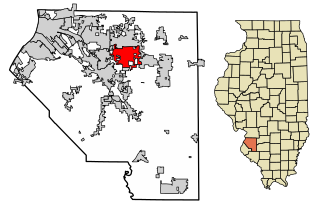
Shiloh is a village in St. Clair County, Illinois, United States. The 2010 census recorded a population of 12,651. Shiloh is located within the St. Louis metropolitan area

Union is a town in Monroe County, West Virginia, United States. Union’s population is 427 as of 2020. It is the county seat of Monroe County.
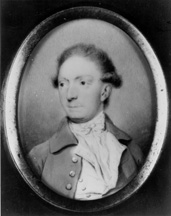
William Grayson was a planter, lawyer and statesman from Virginia. After leading a Virginia regiment in the Continental Army, Grayson served in the Virginia House of Delegates before becoming one of the first two U.S. Senators from Virginia, as well as a leader of the Anti-Federalist faction. Grayson became the first member of the United States Congress to die while holding office.

Thomas Ford was a lawyer, judge, author and the eighth Governor of Illinois. The first Illinois governor to be raised in the state, he served from 1842 to 1846 and became known for restoring the state's solvency and reducing geographic sectionalism, as well as for leading the legislature despite his lack of prior political experience. A lifelong Democrat, Ford is also remembered for anti-Mormon sentiments and vacillation which led to the death of Joseph Smith, and the subsequent Illinois Mormon War of 1844-1845.

Samuel Ogle was the 16th, 18th and 20th Proprietary Governor of Maryland from 1731 to 1732, 1733 to 1742, and 1746/1747 to 1752.

Benjamin Thomas Biggs was an American slave owner, farmer and politician from Middletown in New Castle County, Delaware. He was a veteran of the Mexican–American War and a member of the Democratic Party, who served as U.S. Representative and 46th Governor of Delaware.
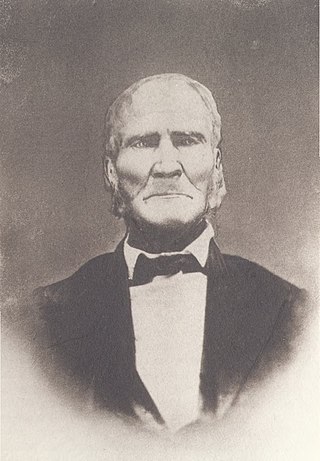
Samuel Whiteside was an Illinois pioneer. A farmer and backwoodsman, Whiteside briefly served in the Illinois General Assembly after statehood and led the Illinois militia for decades, rising to the rank of general but also enlisting as an ordinary soldier when militia calls declined at the end of wars. Whiteside fought the British in the War of 1812 and Native Americans through the Blackhawk War.
Thomas Bladen was a colonial governor in North America and politician who sat in the British House of Commons between 1727 and 1741. He served as the 19th Proprietary Governor of Maryland from 1742 to 1747.
Adamson Tannehill, a native of Maryland, is representative of the United States’ founding generation whose members were active participants in the early military and political events of their country's establishment. He was among the first volunteers to join the newly established Continental Army during the American Revolutionary War. He served for five and a half years, ultimately achieving the rank of captain and commander of the army's longest serving rifle unit. After the war, Tannehill and members of his family settled in Pittsburgh, his last military post of the conflict. He was an early leading citizen of Pittsburgh and a distinguished Pennsylvania politician who held several local and state appointed and elected offices, including one term as a U.S. Congressman; served on the founding boards of civic, state, and national organizations; and had prominent military roles in the state's post-Revolutionary War years.
James Caldwell was the first member of the United States House of Representatives to represent Ohio's 4th congressional district.
Robert Clark was a physician and politician. He served in the New York State Assembly and one term as United States Representative from New York. With his family, he moved to Monroe, Michigan in 1823, joining the migration west. He did not run again for office.
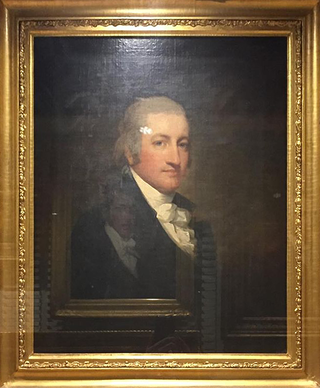
John Tayloe III, of Richmond County, Virginia, was a planter, politician, businessman, and tidewater gentry scion. He was prominent in elite social circles. A highly successful planter and thoroughbred horse breeder, he was considered the "wealthiest man of his day". A military officer, he also served in the Virginia House of Delegates and Senate of Virginia for nine years. The Tayloe family of Richmond County, including his father, John Tayloe II, and grandfather, John Tayloe I, exemplified gentry entrepreneurship.

Thomas Spottswood Hinde was an American newspaper editor, opponent of slavery, author, historian, real estate investor, Methodist minister and a founder of the city of Mount Carmel, Illinois. Members of the Hinde family were prominent in Virginia, Kentucky, Ohio, and Illinois. His sons Charles T. Hinde became a shipping magnate and Edmund C. Hinde an adventurer. He was the father-in-law of judge Charles H. Constable.
Maryland Ridge in Indiana was an unincorporated community of settlers from Calvert County, Maryland in the early 19th century. The settlers came to Indiana after the War of 1812 in successive waves between 1818 and 1839. One community where they settled became known as Maryland Ridge. The geographic area follows the ridges and streams of Indian Creek along the Monroe-Greene County line.
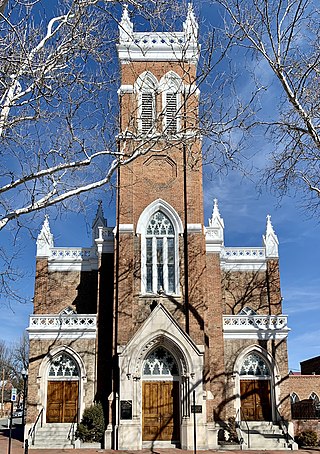
Christ Church, or Christ Episcopal Church, is an Anglican church in Winchester, Frederick County, Virginia. The church was founded in 1738, with its first vestry elected in 1742. It is the seat of Frederick Parish, Diocese of Virginia, which once covered half of the Shenandoah valley and western Virginia, including what became West Virginia. The current church building, the parish's third, was designed by Robert Mills - it was completed in 1828, and is the oldest church building continuously used for religious purposes in the county. It is a contributing building in the local Historic District which predates the National Register of Historic Places, and which has been expanded three times since 1980.
Jesse Walker was the Buckingham County, Virginia-born Methodist minister who built Missouri's first Methodist church in the predominantly French-Catholic city of St. Louis, Missouri in 1819, and the first Methodist church in Chicago, Illinois in 1831. He organized this first permanent Methodist group in Missouri at St. Louis on January 7, 1821, after previously finding 20 members in 1807. On August 10, 1821, Missouri entered the Union as the 24th state. In 1822, the Methodists held their annual conference in St. Louis.












